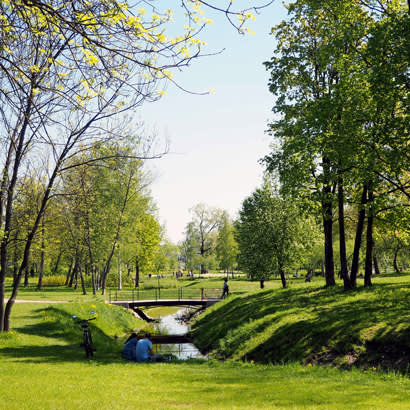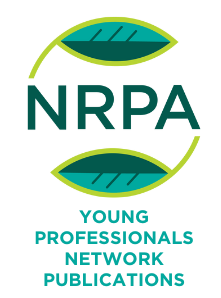
Throughout the years, many people have heard of the term “Going Green,” but what does that look like for cities? How does parks and recreation tie into city planning and development? According to the University of Michigan, it is estimated that 83 percent of the U.S. population lives in urban areas. With more people than ever living in urban areas, it is critical that green planning and sustainable development be at the forefront of our minds. Green planning is a sustainable approach to urban development that prioritizes the environment, public health and equity. It seeks to create resilient, resource-efficient and livable cities for all.
To many, parks and green spaces may be just patches of grass beside the road, but they are so much more than that. The great Fredrick Law Olmstead referred to parks as the “Lungs of The City”. Parks and recreation plays a significant role in green city planning. Parks are an essential component of a city’s green infrastructure and serve as a tool for achieving sustainable development. Here are a few ways that parks and recreation plays a role in green city planning:
Environmental Sustainability
Green city planning helps reduce the carbon footprint of cities by promoting energy-efficient buildings, renewable energy sources and sustainable transportation. Parks and green spaces are essential to help mitigate the negative impacts of urbanization such as air pollution, heat islands and stormwater runoff. Parks and recreation provides environments for wildlife to flourish and stay protected, all while promoting biodiversity within the ecosystem.
Improved Health and Well-Being
Green city planning prioritizes green spaces, such as parks, gardens and public spaces, which can improve mental and physical health. Access to green spaces can help reduce stress, promote physical activity and improve overall well-being. Parks provide places for people to exercise and play sports, which contributes to overall health. Whether through sports, community events or simply spending time outside, green spaces help people build community and enhance social connections.
Promoting Sustainable Transportation
Green city planning promotes innovative urban design, which can enhance the livability of cities. Features such as bike lanes, greenways and mixed-use development can create more vibrant and walkable neighborhoods, while reducing traffic congestion. Parks and greenways can be designed to connect nearby businesses and neighborhoods which can promote more walkability and reduce the need for cars.
Parks and recreation is not the end-all be-all to building a sustainable city, but it is a start. Planning for sustainability requires a comprehensive, “full-court press” approach to achieve the desired results. Park and recreation professionals are needed now more than ever to help guide us into the future. As cities continue to grow, it is important to keep sustainable planning and land conservation at the forefront of our minds. These green spaces are important to overall personal health, and the health of our environment. By implementing sustainable planning and conservation practices, we can ensure that cities will continue to thrive for generations.
Chandler Nobles, MS, CPRP (he/him) is an athletics supervisor at Valdosta-Lowndes County Parks and Recreation Authority.
This blog post was written in partnership with the NRPA Young Professionals Network (YPN). Learn more about the NRPA YPN on NRPA Connect or on the YPN Facebook group.


